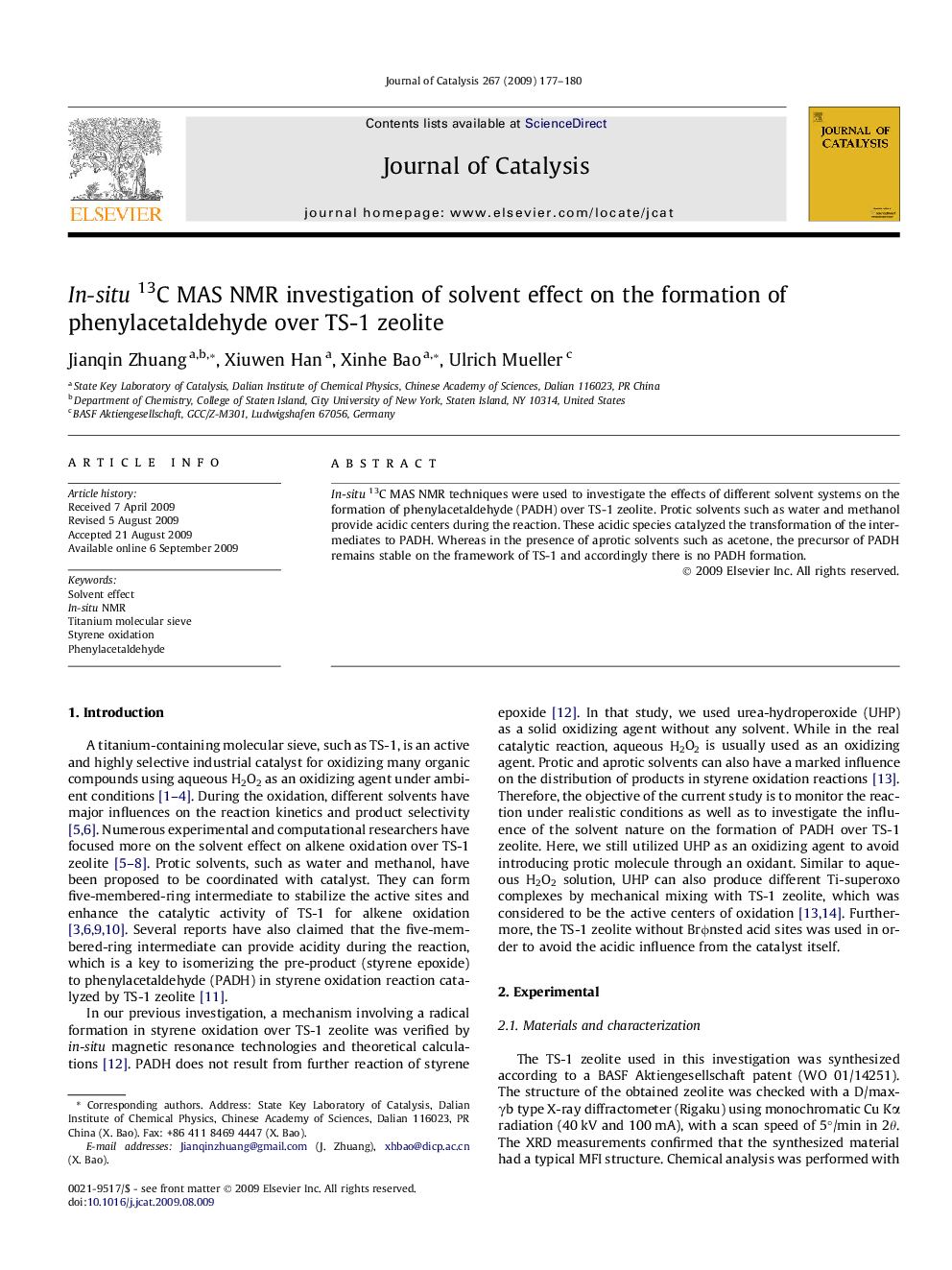| Article ID | Journal | Published Year | Pages | File Type |
|---|---|---|---|---|
| 62042 | Journal of Catalysis | 2009 | 4 Pages |
In-situ13C MAS NMR techniques were used to investigate the effects of different solvent systems on the formation of phenylacetaldehyde (PADH) over TS-1 zeolite. Protic solvents such as water and methanol provide acidic centers during the reaction. These acidic species catalyzed the transformation of the intermediates to PADH. Whereas in the presence of aprotic solvents such as acetone, the precursor of PADH remains stable on the framework of TS-1 and accordingly there is no PADH formation.
Graphical abstractIn-situ13C MAS NMR experiments presented that protic solvents such as water and methanol provide acidic centers during the reaction, which is a unique factor to form phenylacetaldehyde over TS-1 zeolite.Figure optionsDownload full-size imageDownload high-quality image (27 K)Download as PowerPoint slide
